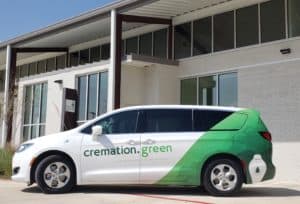Wedding vows often include “til death do us part”, but even then there are ways for a couple’s cremated remains to remain together for many more years after dying. People can request that their cremated remains end up with their spouse or significant other, whether they are buried together, kept in the same columbarium niche or held in the same urn.
But that’s not a given. If you want your cremated remains to end up with your partner you have to take steps in advance to ensure that happens. Here’s what to do.
Talk With Your Partner or Next of Kin
One of the best things you can do is have an open and honest discussion with your partner if they are still living. Go over what you both want and how to handle issues if you want a different type of disposition or have different ideas about where your remains will end up.
This is a particularly important first step for domestic partners because they aren’t included as a spouse or next of kin under state law. The only way a domestic partner will have a say in funeral matters is through a last will and testament.
If your partner is no longer living talk things over with your next of kin. They will likely be involved with the funeral arrangements, especially if there’s nothing on record stating your wishes.
The goal is to make sure everyone who might be involved in arranging your funeral knows what you want. Be clear and direct so that there are no misunderstandings. Be prepared to also answer questions that others may have and to address their concerns.
Get All of Your End of Life Preferences on Paper
If your preferences aren’t documented on paper, there’s a chance they won’t be honored regardless of your marital situation. A famous example of this is Bonnie and Clyde. Apparently, Bonnie had made it known she wanted to be buried next to Clyde. Not much longer after she made her wishes known to family is when law enforcement caught up with the couple in Louisiana. Bonnie’s mother did not honor her daughter’s wishes, and Bonnie was buried in a family plot in Dallas’ Crown Hill Memorial Park while Clyde was buried miles away in Western Heights Cemetery.
There are different ways to document end of life wishes, including where you want your cremains end up and if you want them to be with your partner. It’s always a good idea to have a last will and testament that clearly states your end of life wishes. This makes it easier for everyone involved and settles any potential disputes before they can even happen. Anything that’s written out and signed is enforceable, but it’s even better to have a last will and testament drawn up by a lawyer or estate planner.
Name an Executor You Can Trust
An important element of the last will and testament is naming an executor. This is the person who’s respcnsible for making sure the will is carried out as written. Much of what they have to do is spelled out in the will and guided by laws, but certain tasks like making sure the cremated remains end up where they’re supposed to have less legal oversight.
Choosing an executor you can trust to get the cremains where they need to go is crucial. It really will be up to them to make sure your remains are togegher with your partner’s. If need be, you can name co-executors for the will. It could provide more assurance that everything will be done properly and serve as a safety in case one executor can’t handle all of the responsibilities.
It may be best to avoid using someone as an executor if you know they have issues with any of your death care choices. Someone who fully respects your wishes even when they don’t align with their own is often the best choice for executor.
Make Funeral Arrangements for Yourself in Advance
There’s one last measure that will ensure your funeral services are handled exactly how you want and you are with your significant other in the end. Many funeral homes make prearrangements and may even offer added incentives such as discounts on prepaid services and/or payment plans that allow you to pay for services over time.
Another advantage of advanced planning is having time to consider all of the options. Like fully exploring the pros and cons of a columbarium niche to burying cremated remains. You’ll have time to figure out the logistics of making sure you and your significant other remain together regardless of the disposition that you choose.
Just make sure to note any prepaid funeral services in your last will and testament. It should note the name of the funeral home, the services and the amount paid. That way everything is seamless and reiterates your preferences.
Consider a Permanent Resting Place
Resting in peace with your partner is easier when you have a permanent resting place. There are a variety of options for what to do with cremated remains, some of which are more permanent than others. Just compare burying cremains in a cemetery versus scatter cremains on a cliffside. One is much more permanent than the other in terms of where the cremated remains end up.
Getting a burial plot could be a good option if one spouse plans to be buried and the other cremated. Often the cremated remains can be buried on top of a casket. You could also reserve or pay for a niche that’s large enough to hold both urns if you both plan to be cremated.
At Cremation.Green we do what we can to help families carry out the wishes of their loved ones. We’ll work with you directly to carry out efficient, eco-friendly death care services and prepare the remains so that they can be used however you want.






